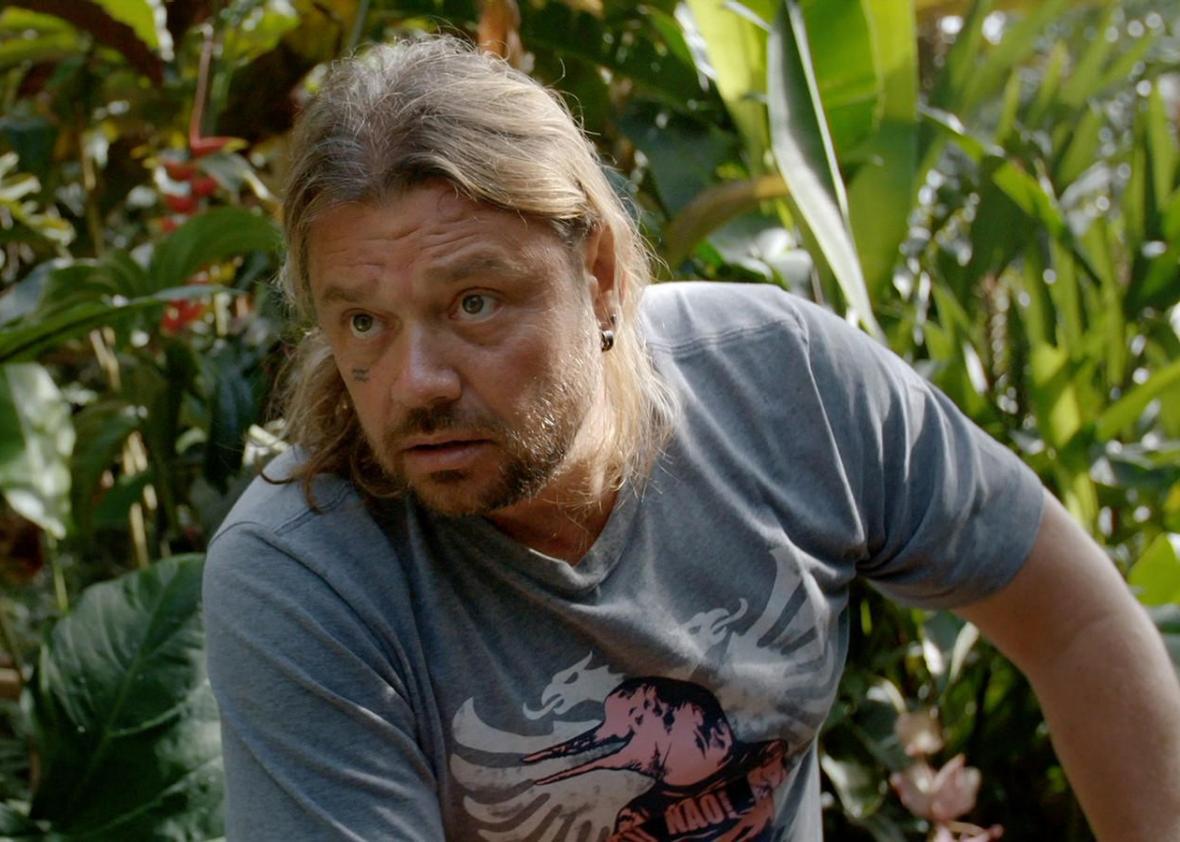The first thing you see in Mark Grieco’s documentary A River Below is so horrific it might also be the last. The footage of men paddling a boat along a darkened river, a handheld light carving out space in the darkness, could be a clip from any “In Search of…” travel show, an impression furthered when they finally spot the object of their quest, which we’ll later learn is an Amazonian river dolphin. But then a spear shoots into the frame and pierces the dolphn’s side, and as the water starts to foam and fill with blood, you realize what you’ve been watching is a group of hunters closing in on their prey.
Contemporary documentaries are lousy with these sorts of action-packed flash-forwards, a way of reassuring audiences that if they’ll just stick it out through the tedious process of getting to know the movie’s characters and its setting, they’ll be rewarded with some honest-to-goodness excitement. But this isn’t a simple case of a movie opening with a teaser for itself. That piece of footage turns out to be like the picture of children on a Icelandic road that opens Chris Marker’s Sans Soleil, a piece of evidence that poses as many questions as it answers.
A River Below starts off, straightforwardly enough, as a profile of Richard Rasmussen, a Brazilian TV personality whose scruffy facial hair and fondness for do-rags occasionally makes him look like an antic cousin of David Foster Wallace. The host of a NatGeo show called Mundo Salvage (Wild World), he’s a passionate conservationist and a camera-hog, drawing attention to his cause by drawing attention to himself. The fate of the river dolphin, also called boto, strikes especially close to home. As a carnivorous catfish called the piracatinga becomes popular in South American supermarkets, Amazonian fishermen flout government proscriptions and slaughter thousands of boto to use as bait, threatening the survival of an iconic species. Rasmussen has devoted his life to educating people about the fragility of earth’s ecosystem—and, to judge by his surroundings, made a good living at it—but the emerging crisis seems beyond his ability to affect it. So it’s fortuitous that the footage which opens the movie emerges, leaked anonymously to a Sunday-night newsmagazine show, especially since the full clip reveals the slaughtered dolphin was pregnant.
That this extra-disturbing bit of detail can be viewed as a good thing is central to the ethical issues which gradually invade and eventually take over Grieco’s documentary. The worse the images, the easier to capture the conscience of the public—and indeed, the footage does result in the government instituting a five-year ban on piracatinga fishing. But the origins of the footage and the motive for its distribution remain very much in dispute, as do the effects of the ban, which strikes at impoverished indigenous communities who have few other options with which to provide for themselves. Fernando Trujillo, a Colombian scientist whom the movie uses as an occasional foil to Rasmussen, wears a bulletproof vest when he’s in the area, and yet he seems to consider humans as a part of the ecosystem, especially those with fragile livelihoods whose interests are rarely weighed by the ruling class.
Like Shaul Schwarz and Christina Clusiau’s Trophy, A River Below takes a subject on which we may go in assuming our views are set and forces us to revise them over and over again: Big game hunting is bad, except that it provides an incentive to keep endangered species alive to they can be hunted, but that incentive is then warped by the imperatives of capitalism; we must protect the environment, but in a way that does not harm the people who also inhabit it. One bottom falls though, then another and another, until we stop trying to settle on a final position and simply brace for the drop.
It’s difficult to talk more about A River Below without giving away its surprises, except to say that that its ethical knottiness only becomes knottier, and that it starts to eat away, by design, at the film itself. At a certain point, it becomes necessary for Grieco to deceive Rasmussen, if only by omission, about the avenues he’s investigating. During a panel at the Camden International Film Festival, where I saw the movie in September, Grieco remembered eating dinner with Rasmussen’s family and thinking, “I feel like a piece of shit—but it’s also kind of exciting.” At its best, the movie manages to convey both of those feelings, especially in a thrilling and deeply uncomfortable scene in which Rasmussen finally confronts the filmmaker. We’ve seen many scenes like this before, usually on news networks where some deceitful public figure is caught in a lie and starts squirming under the lights, but here, the interrogator gets as good as he gives. (Imagine an Errol Morris movie if he turned the Interrotron on himself.) Grieco gets down in the muck with his subject, and by the time they’re done tussling, no one gets away clean.
